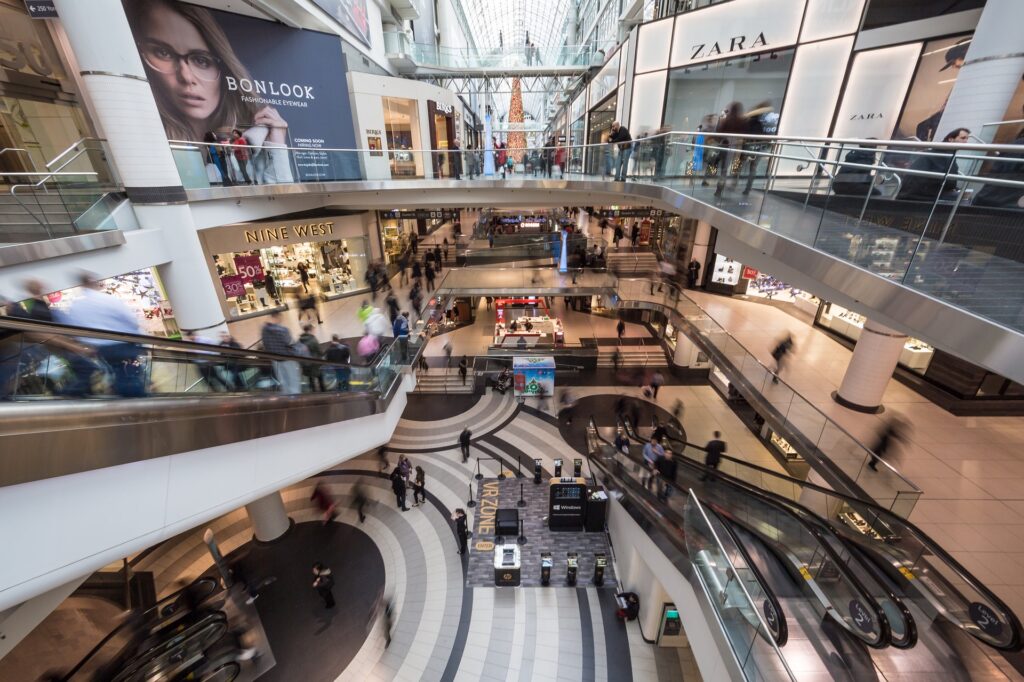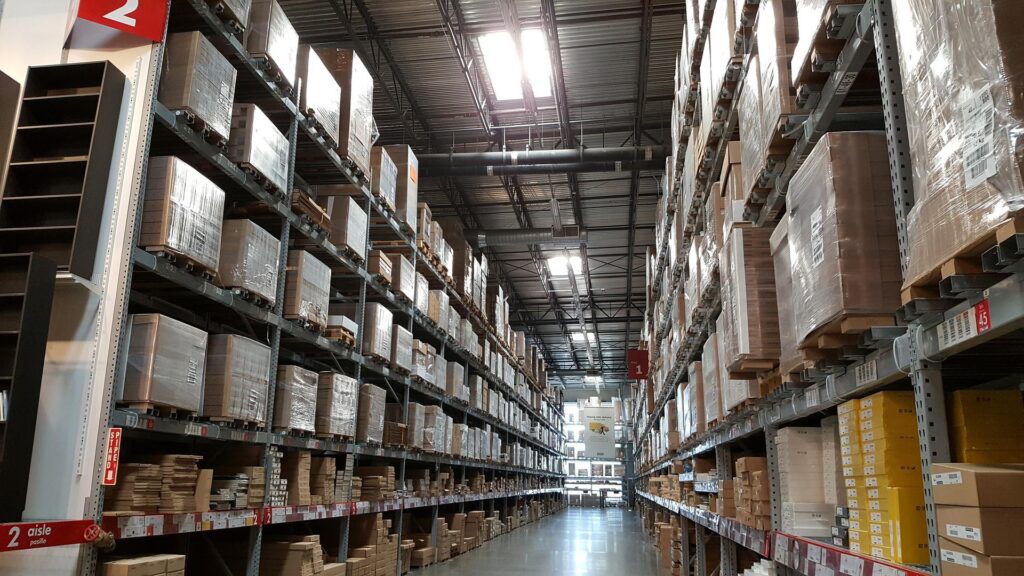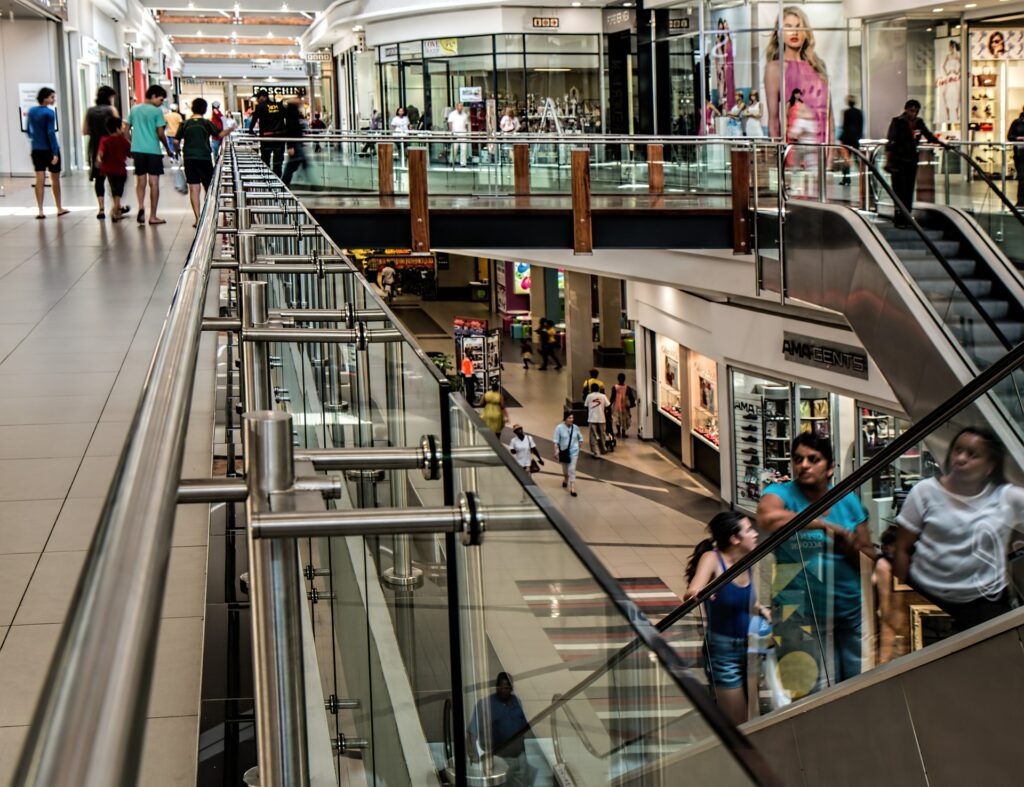Welcome to the Topic “Commercial Retail Properties and the Effects of E-commerce”
Since its start in 1991, e-commerce has grown exponentially. Currently, online sales account for nearly 14% of total retail sales in the United States, which Deloitte estimates will more than double by 2030. Perhaps even more significant is that e-commerce sales now account for about 52% of all retail sales growth and are growing at three times the rate of traditional brick and mortar retailers. What does this mean for the retail and industrial real estate industries, specifically?
Impact on the Retail Industry
As e-commerce behemoths like Amazon and E-Bay have dominated the market, more and more big-box businesses are closing their doors, unable to compete with their online competitors’ low prices. However, this does not imply that traditional shops are doomed (remember that about 86 percent of retail sales are still coming through brick and mortar locations), but rather that merchants who choose to continue with the more traditional model must develop to meet evolving consumer expectations.
The new consumer is looking for something they can’t find anywhere else. To put it another way, if they’re going to leave their homes, it had better be worth it.
This implies that old business models for places like movie theaters, fitness clubs, and bowling alleys, among others, are being phased out in favor of new ones that provide a more extensive range of options for customers. This could imply the addition of higher-quality food or premium beverages to attract a new clientele.
With the entry of e-commerce enterprises, the commercial retail industry has adjusted its focus to include a much higher knowledge of the restaurant segment. Once a primarily overlooked competitor in retail, restaurants are gaining traction with investors as the general pattern of customers looking for experiences grows.

Furthermore, changes in the retail business have made valuing retail properties much more difficult, as places that were once considered high-traffic or high-street retail might no longer bear the same weight. As many of the massive anchor retailers close their doors, the shopping complexes that house them are losing their appeal to smaller businesses that rely on their volume.
Many firms also prefer to downsize, replacing many goods displays with exciting possibilities that take up significantly less room. This makes determining a property’s worth more challenging based on its square footage. However, retail space isn’t the only area of commercial real estate that has been affected by the advent of e-commerce.
Industrial Market Consequences
The e-commerce boom is also having an impact on the industrial industry. The demand for accessible warehouse space to assemble and store products grows as more retailers move their businesses online. Even with the 2,000 or so new storage or warehouse establishments opened in the United States over the last decade, supply is still falling short of demand.
Location is one of the most essential elements driving this disparity. With consumers becoming more reliant on same-day or next-day delivery, having warehouse facilities within highly populated regions has become extremely important.
Digital revolution and urbanism fueled by population expansion are arguably two contemporaneous megatrends with substantial economic and social repercussions that we are witnessing. Both of these megatrends intersect in retail real estate.
The basic monetary necessities of a large population are constantly driving technological improvements to meet those needs. As a result, traditional retailing has undergone tremendous alterations in the past few decades to deal with constant upheavals.

The new COVID-19 epidemic has triggered even more severe and abrupt changes. It’s impossible to predict how this will play out in the future or what shapes and formats of retail business will survive the COVID-19 issue.
Nonetheless, we conduct both primary and secondary research to identify some concerns and patterns that will help us better comprehend the disruptions and transformations already underway. There is little question that new norms will emerge and that the changes will be long-lasting.
The trend of technological transformation and digitalization is a significant cross-cutting trend. We see massive changes across all sectors and facets of human existence due to the internet and mobile technologies. Technology has numerous advantages: it may minimize costs, boost efficiency, eliminate planning delays, identify needs and areas of development, assist with reliable performance evaluation, limit the risk of unfounded speculation, and reach out to more citizens, among others. In terms of profitability and income, investing in technology that aids in developing tools, goods, and services may be highly beneficial and long-term.
Many platforms and start-ups are already focusing on technical innovation. Investment opportunities range from 3D printing building portions to better materials to digital networking. Retail real estate is likely to be the most affected by these two major movements within the property market.
The internet retailing platforms have grown from a few websites (such as Amazon and eBay) to alternative models, such as social networking platforms, independent merchant websites, and mobile shopping apps. The widespread availability of 3G and 4G mobile networks has offered a significant boost in recent years. As 5G networks are introduced shortly, this is projected to grow tremendously.
Individuals in many OECD countries have reduced their physical interactions due to the COVID-19 crisis. Self-imposed social distance to avoid contagion and severe confinement measures in many OECD countries have effectively placed traditional brick-and-mortar retail on pause, at least temporarily.
Retail and food service purchases in the United States fell 7.7% between February and April 2020 compared to the exact time in 2019. Grocery stores and non-store retailers (primarily e-commerce providers)1 saw sales rise by 16 percent and 14.8 percent.

Retail sales through mail-order houses or the internet in the EU-27 climbed by 30% in April 2020 compared to April 2019, but total retail sales fell by 17.9%. The shift from brick-and-mortar to e-commerce results is expected to be extensive across countries.
While the share of e-commerce in entire retail in the United States climbed modestly from 9.6 percent to 11.8 percent between the first and second quarters of 2020 (from 9.6 percent to 11.8 percent), it sprung to 16.1 percent between the first and second quarters of 2020.
The trend is similar in the United Kingdom, where e-share commerce’s in retail climbed from 17.3 percent to 20.3 percent between the first and second quarters of 2020 before rising drastically to 31.3 percent between the first and second quarters.
Similar trends can be seen in other places, such as China, where the share of online retail in total accumulated retail sales increased to 24.6 percent between January and August 2020, up from 19.4 percent in August 2019 and 17.3 percent in August 2018.
While official data for most other nations is unavailable, estimations imply that internet orders increased in various regions during the first half of 2020, including Europe, North America, and Asia-Pacific. E-commerce increased dramatically in Asia-Pacific countries during the first quarter of 2020. Still, it increased later in Europe and North America, notably after numerous OECD countries followed Italy’s lead and implemented restriction measures within a short period.

Google searches for delivery choices nearly doubled in several countries (e.g., Germany and the United Kingdom) before any confinement measures were implemented, demonstrating the intimate relationship between consumer expectations, government action, and behavioral change.
The impact of the COVID-19 crisis on e-commerce varies by product category and by the seller. For example, in the United States, demand for things linked to personal protection (e.g., disposable gloves), home activities, food, or ICT equipment increased. In contrast, demand for items related to travel, sports, or formal clothes decreased (e.g., suitcases, bridal clothing, gym bags, etc.)
With new ways of buying, it’s safe to anticipate that not everyone in the retail industry will benefit. There is evidence that physical businesses are losing sales due to the rapid rise of e-commerce over several years.
Behind every store is a real estate owner that relies on the rental income of its tenants, which could be jeopardized if the merchants do not adapt to the changing retail landscape. If merchants’ income losses are shifted to real estate owners, it may have a detrimental impact on the value of their retail buildings.
Have any questions regarding the topic “Commercial Retail Properties and the Effects of E-commerce” feel free to comment below.
Also Read: Industrial Properties and the Effect of E-commerce
TAGS